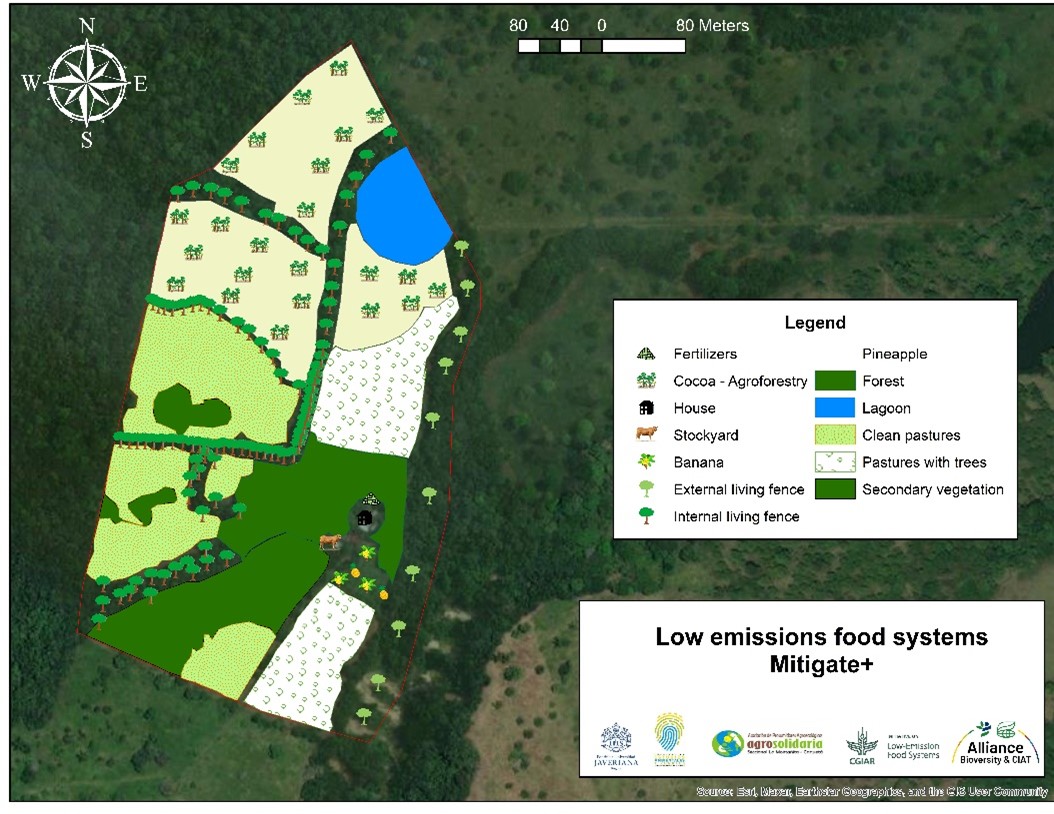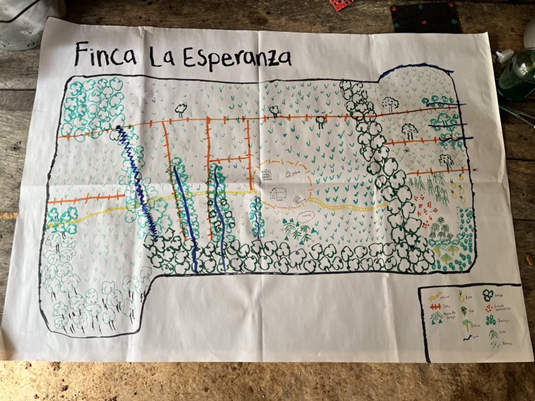
By Neidy Clavijo and Thomas Gómez, Pontificia Universidad Javeriana
In the endeavor to co-design cocoa and livestock low-emission agri-food systems that foster peace, sustainability, and resilience to climate change in the Caquetá department of Colombia, understanding the intricate biophysical and social dynamics of these agroecosystems is of paramount importance. This comprehension is essential for gauging the resilience of these systems in the face of climate change.
Therefore, the analysis of the Main Agroecological Structure (MAS) becomes an invaluable tool for evaluating agroecosystems in their biophysical and cultural complexity, contributing to the planning of low-emission agri-food systems resilient to disturbances. This method evaluates the design, landscape connectivity, and management of cocoa and livestock agroecosystems to propose potential strategies for mitigating and adapting to climate variability. Concurrently, it aims to produce food and enhance the livelihoods of farmers.
The MAS considers the internal spatial arrangement of farms, as well as the landscape structure surrounding them. It assesses the distance between cocoa and livestock agroecosystems and their relationship with surrounding fragments of natural vegetation cover, water sources, and the extent and diversity of internal connectors (Map 1). Consequently, five ecosystem criteria are evaluated to obtain the MAS: Connection with the main Ecological Structure of the Landscape (CESL), Extension of External Connectors (EEC), Diversification of External Connectors (DEC), Extension of Internal Connectors (EIC), and Diversification of Internal Connectors (DIC). Additionally, five cultural criteria are utilized for the set of social relationships: Land Use (LU), Agricultural Management Practices (AMP), Conservation Practices (CP), Perception-Awareness-Knowledge (PAK), and Capacity for Action (CA).

The final MAS assessment of the agroecosystem is derived by summing up each of the ecosystem and cultural parameters on a scale of 1 to 10.
Chart 1. MAS interpretation scale
| Value | Interpretation |
| 91 – 100
81-90 71-80 61-70 51-60 41-50 31-40 21-30 11-20 <10 |
Fully developed
Very strongly developed Strongly developed Moderate to strongly developed Moderate Moderate to slightly developed Slightly developed Weakly developed Very weakly developed No structure |
Taken from: León Sicard (2021)
For the initiative “Low-Emission Food Systems” (Mitigate+), MAS assessment was conducted on 13 farms in the Caquetá department: 6 farms in the municipality of Belén de los Andaquíes and 7 farms in Montañita; comprising 7 livestock agroecosystems and 6 cocoa agroecosystems. During these visits, researchers conducted semi-structured interviews, participatory farm mappings (Map 2), on-site walks, and collected geographical coordinates for land use description.

Thanks to these efforts, the MAS evaluation was carried out based on the 10 proposed criteria. In the case of Belén de los Andaquíes and Montañita, strengths were identified in the cultural aspects of both livestock and cocoa agroecosystems, demonstrating sustainable management practices and a significant degree of environmental awareness and recognition of biodiversity functions. However, the MAS tends to be moderate, as there is a need to strengthen ecosystem-related criteria, such as live fences to enhance biodiversity and adaptation and mitigation to climate change. Similarly, the presence of scattered trees should be reinforced, as they provide well-being to livestock in high temperatures, crucial for better milk production.
In conclusion, the analysis of the Main Agroecological Structure is a potent tool to fortify land planning processes, considering strategies for climate change mitigation and adaptation, as well as biodiversity enhancement.
This blog has been written based on the work carried out on the frame of the WP3 of the One CGIAR initiative Low-Emission Food Systems. See more information on the CGIAR Initiative on Low-Emission Food Systems.
References:
León Sicard, T.E. (2021) La Estructura Agroecológica Principal de los agroecosistemas. Perspectivas teórico-prácticas. Bogotá: Universidad Nacional de Colombia.



